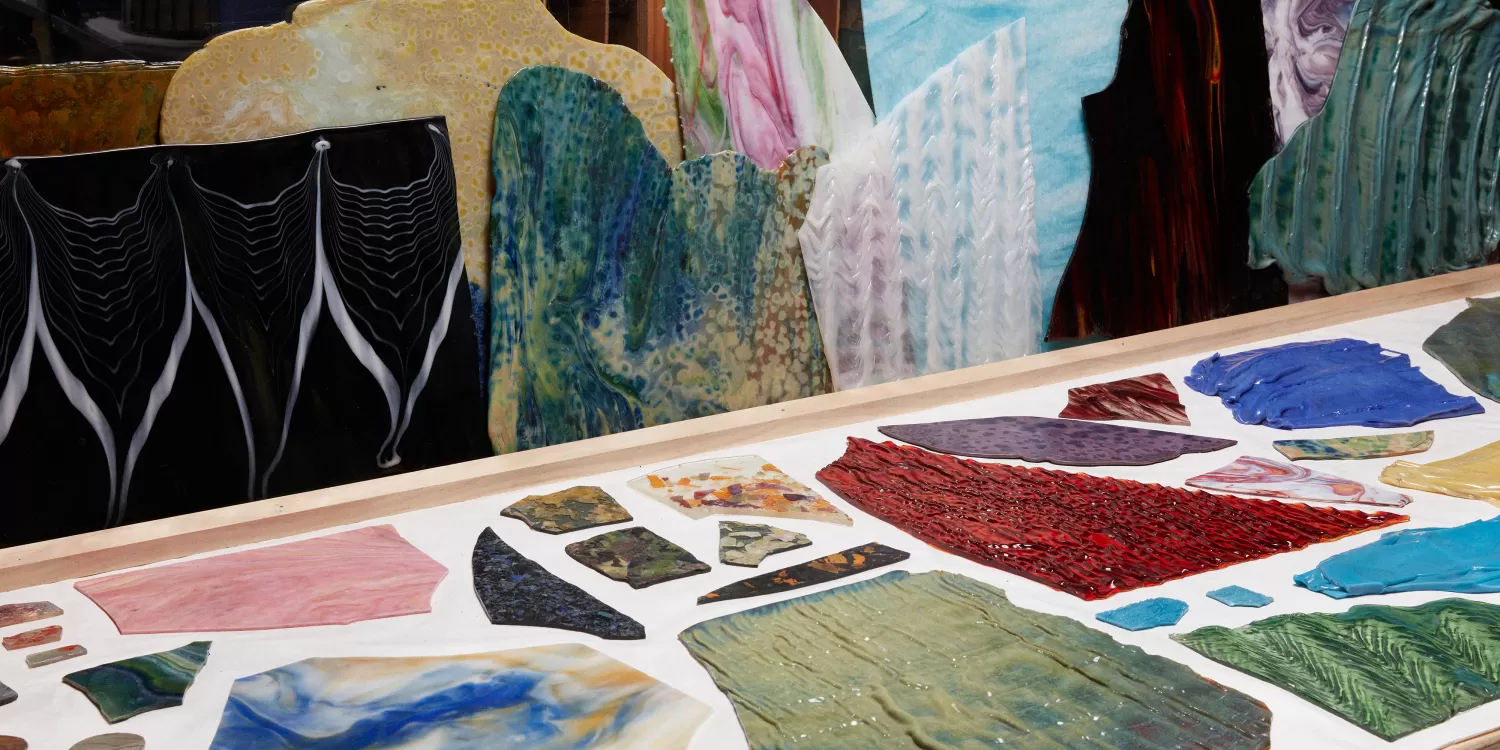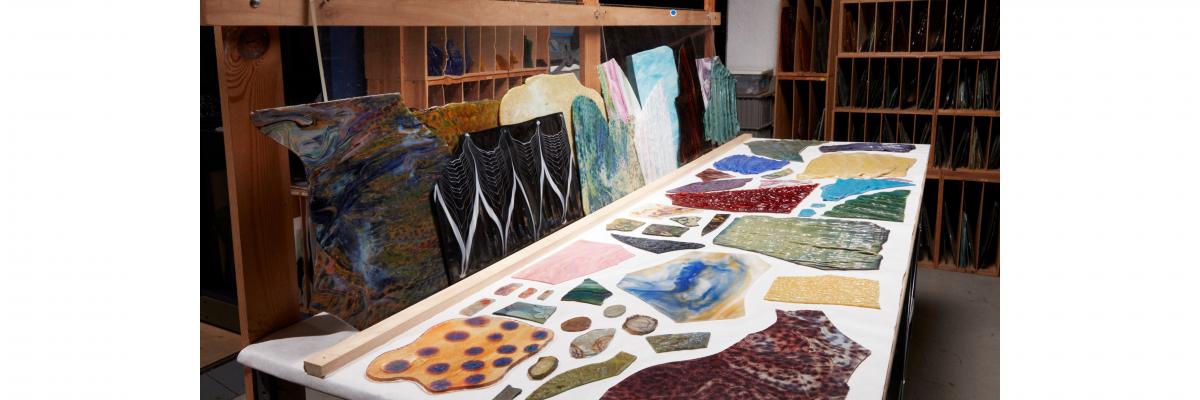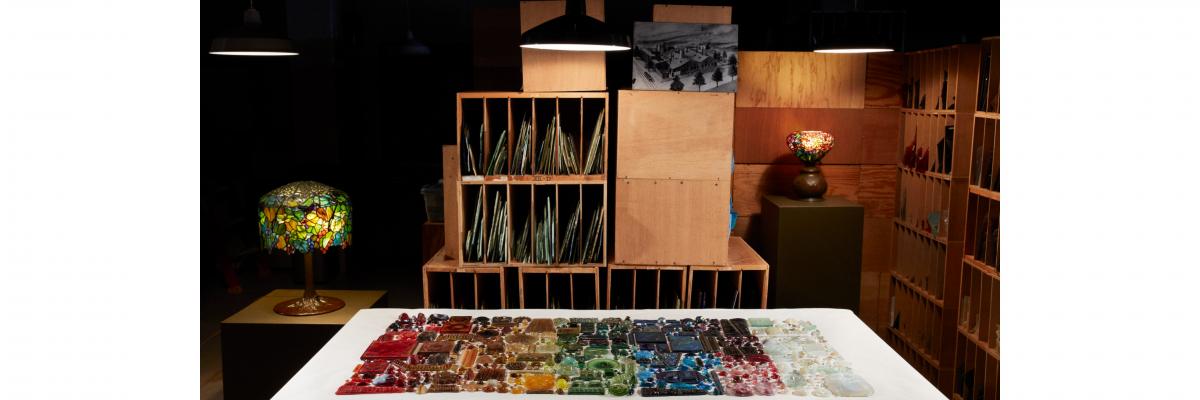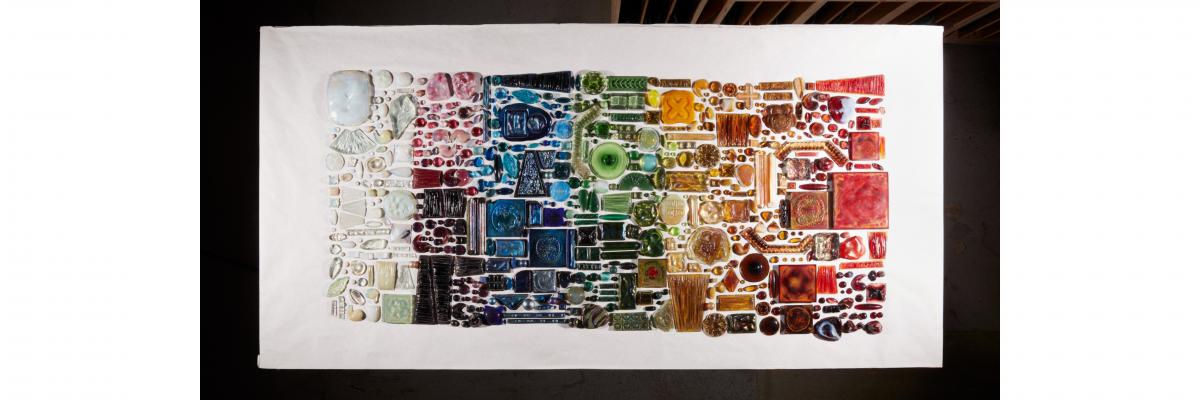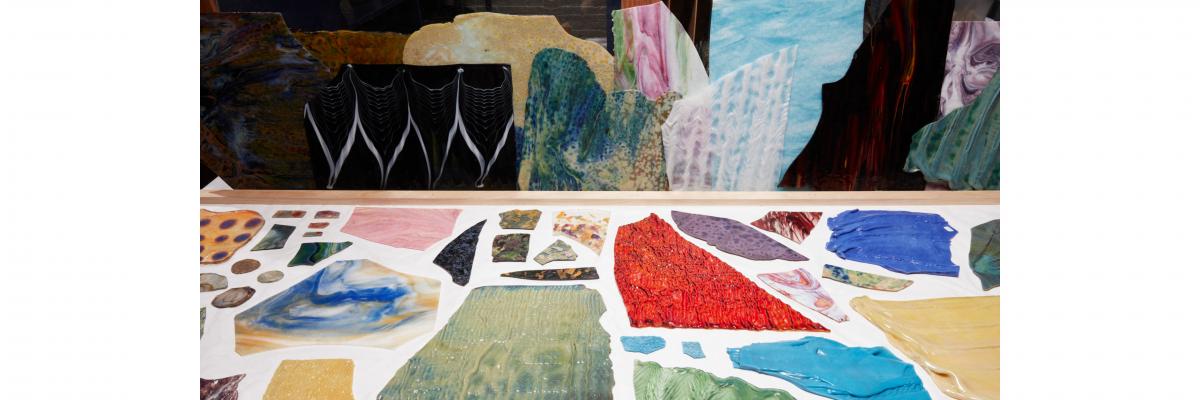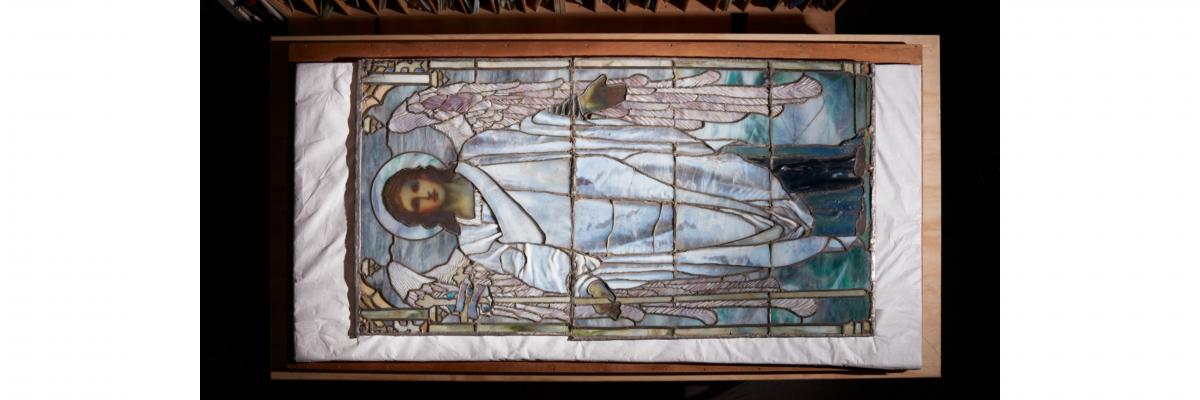A one-of-a-kind collection
Louis C. Tiffany initially worked with glasshouses in Brooklyn, New York and Kokomo, Indiana, to make artistic opalescent glass. But as his reputation grew and his business expanded, he needed quality glass in greater varieties and ever-increasing quantities. To that end, he opened his own glass furnaces in Corona, Queens in 1893. He called his glass “Favrile,” a trademarked term loosely derived from the Latin word fabrilis, to mean “made by hand.” Tiffany continued to purchase glass and often used a combination of commercial and Favrile glass to create his iconic designs.
When Tiffany’s firm closed in 1937, all remaining stock was sold. The liquidation sales included a vast inventory of flat glass, ranging from full, uncut sheets to shards the size of a fingernail, as well as a tantalizing assortment of glass “jewels.” Early Tiffany collector and museum founder Dr. Egon Neustadt (American, b. Austria, 1898–1984) recognized the historical value of this material and purchased it in 1967. Today, this treasure trove is a unique, one-of-a-kind Glass Archive boasting over a quarter of a million examples of original Tiffany glass in vibrant colors, hypnotizing patterns, and intriguing textures. The Archive documents Tiffany’s critical role in inaugurating a new era in the art of colored opalescent glass.
Photos by Reed Young
Interested in visiting? Learn more about our private behind-the-scenes tours.
Advanced registration is required.
Please note: Tours of the Tiffany Glass Archive are paused in 2025, but we look forward to welcoming you back soon!

